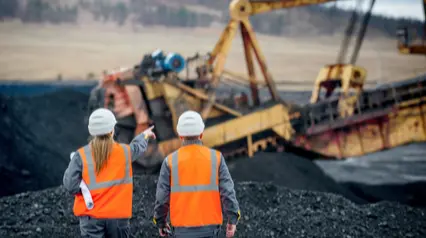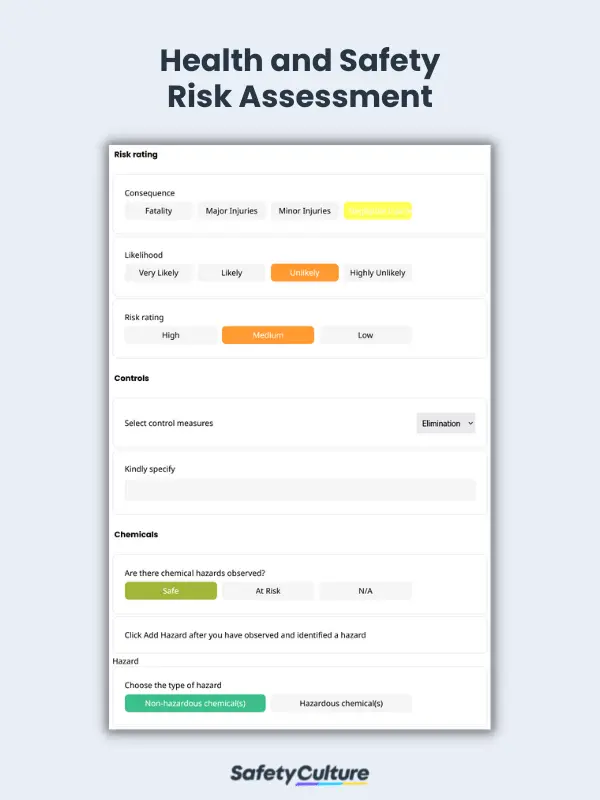What is a Health and Safety Risk Assessment?
A health and safety risk assessment is a process that identifies, analyzes, controls, and eliminates hazards that can cause injury or illness to the workforce and negatively impact the business. Employers are required by law to conduct health and safety risk assessments to ensure the safety of their employees and the public.
What are the Most Common Health and Safety Risks?
Among all the variety of risks in the workplace, here are three of the most common risks to occupational health and safety according to the latest statistics from the UK’s Health and Safety Executive (HSE):
Manual Handling and Repetitive Action
According to the HSE, manual handling, awkward or tiring positions, working with keyboards, and repetitive actions are the main causes of work-related musculoskeletal disorders. Self-reported cases have been in decline over the years but these still continue to be one of the highest health and safety risks in the workplace particularly among the following industries: agriculture, construction, healthcare, and social work.
Mental Health
Cases are on the rise for work-related stress, depression, or anxiety mostly caused by workload, lack of support, workplace violence, bullying, and even work changes. These challenges to mental health are highest in HVAC supply, public administration, healthcare, and education. Steps can be taken to recognize challenges and extend assistance to employees who need help and support.
Respiratory Issues
Work-related respiratory issues are on the rise and these include cases of chronic obstructive pulmonary disease (COPD), lung cancer, asbestos-caused lung cancer, and mesothelioma which is also caused by past exposure to asbestos. Asbestos is recognized to be a dangerous material and safety measures have already been mandated to mitigate exposure.
5 Steps to Effectively Implement Health and Safety Risk Assessment
According to the Health and Safety Executive (HSE), employers and self-employed persons are legally required to make an assessment of health and safety risks that may be present in their workplace. Risk assessments should be carried out before proceeding with the work task. Below is a step-by-step guide on how to complete a health and safety risk assessment:
1. Identify the hazard
Walk around the workplace and assess activities, processes, or substances that could be a potential cause of injury. Hazards can be classified into 4 different types, these are:
- Physical (e.g., lifting, slips and trips, noise dust, machinery, etc.)
- Mental (e.g., excess workload, long hours, bullying, etc.)
- Chemical (e.g., asbestos, cleaning fluids, aerosols, etc.)
- Biological (e.g., infectious diseases, tuberculosis, hepatitis, etc.)
2. Determine who it affects and how
Once hazards are identified, identify which persons in the organization are at risk. Review work routine, location, and situation of employees. Another thing to consider is the health and safety of the public. This refers to those who don’t work in the organization but are exposed to potential hazards due to business operations. For example, in construction sites, passersby are at risk of potential injury from debris, chemical substances, etc.
3. Assess the risks and take corrective action
Employers must now analyze risks to determine the corrective actions to take. Two key questions to ask when assessing the risks and formulating corrective actions are:
- How bad would the most severe injury be if a person is exposed to the hazard?
- How likely is the person to be injured if exposed to the hazard?
4. Use health and safety risk assessment forms for better documentation
Risk assessments should be documented to serve as proof that it was carried out, and as a basis for later review of working practices. The report should include details of hazards identified and the corrective action taken.
5. Review risk assessment and update
Risk assessments should be reviewed regularly to check if the control measures taken are effective or needs updating. It should be reviewed every time a business goes through changes that may increase the likelihood of new hazards arising.



